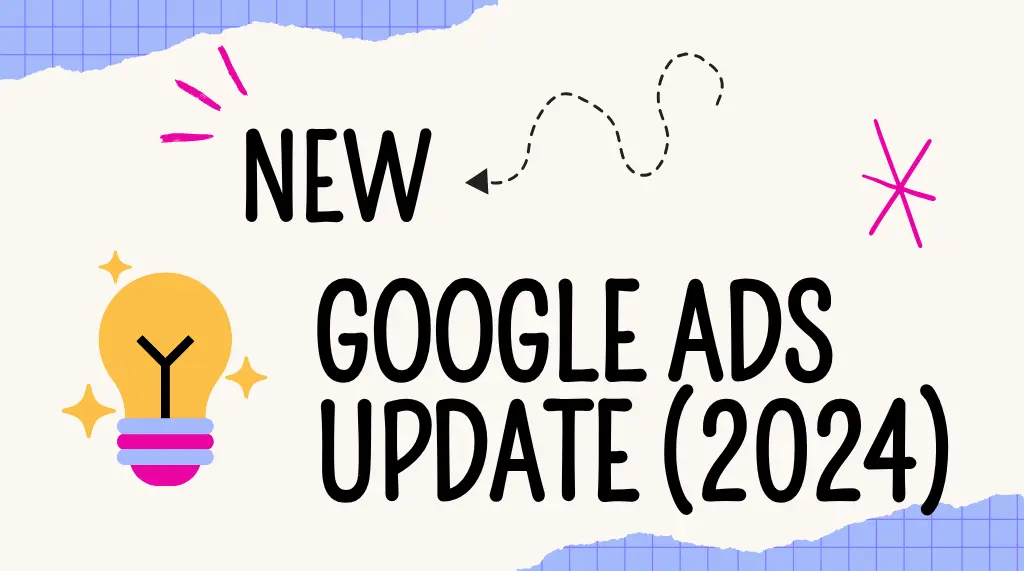Google has introduced a significant update to its Performance Max campaigns, set to roll out gradually starting in October 2024. This change will affect how products are displayed if you’re currently using both standard shopping campaigns and Performance Max. Understanding the implications of this update is crucial for optimizing your campaigns effectively.
Changes to Overlapping Campaigns
Previously, when both Performance Max and standard shopping campaigns featured the same product, the Performance Max campaign would automatically take priority. However, this is no longer the case. Google is now applying standard auction dynamics, meaning that the campaign with the highest ad rank will serve. This change levels the playing field between Performance Max and standard shopping campaigns, where ad rank, driven by bid strategy, will determine which campaign is favored.
Understanding Ad Rank and Bid Strategy
What does this mean for your advertising strategy? If you’re running a standard shopping campaign alongside a Performance Max campaign, you might find that your standard shopping ads receive more clicks and impressions. This shift could occur if your bid strategy for the standard shopping campaign is more aggressive, allowing it to surpass the Performance Max campaign in ad rank.
This means that if you have been relying solely on Performance Max, it may be time to reassess your bidding strategies. If your standard shopping campaign’s bids are higher, it could outperform your Performance Max ads for the same products.
Campaign Structure Considerations
In light of this update, reevaluating your campaign structure is essential. If your current strategy involves running both campaign types without overlap, you might not feel much impact. For example, if you’re managing your Performance Max campaigns to focus solely on best-selling products, then excluding these from your standard shopping campaigns may minimize overlap and reduce competition for the same products.
However, for those who have overlapping products, it’s crucial to monitor performance closely after the update. This is particularly important if you have negated brand terms in your Performance Max campaign while running a standard shopping campaign targeting brand traffic. You might notice a shift in search queries and traffic that could affect overall performance.
Monitoring Dormant Campaigns
One potential concern with the new changes is the status of dormant standard shopping campaigns in your account. If you have old campaigns that haven’t performed well, they may now be competing effectively due to the new dynamics of ad rank. Reviewing these campaigns is essential to determine if they should remain enabled or if adjustments are needed to align with your current strategy.
As you assess your account, consider the bidding strategies you’ve employed. High bids on dormant campaigns might result in them outpacing your Performance Max efforts, given that both types of campaigns will now operate on equal footing regarding ad rank.
Future Implications for Campaign Strategy
While there’s considerable discussion within the marketing community regarding the impact of this update, many professionals don’t view it as a significant threat if their current campaign structures are sound. Following a disciplined approach—such as avoiding product overlap—should help mitigate potential issues stemming from the update.
With the holiday season approaching, now may not be the time to overhaul your entire strategy. Instead, focus on reviewing your dormant standard shopping campaigns and monitoring brand queries in your campaigns to ensure you’re still aligned with your marketing objectives.
It’s also worth noting that while Performance Max is gaining traction, traditional campaign types like standard shopping are not going away anytime soon. This update from Google indicates a commitment to maintaining multiple campaign types in the ecosystem, providing advertisers with choices based on their specific needs.
For businesses looking to maximize their online sales and streamline their advertising efforts, integrating platforms like Shopify can be beneficial. By leveraging Shopify’s robust e-commerce capabilities, you can effectively manage your product listings and advertising campaigns, optimizing your overall marketing strategy. If you’re interested in exploring how Shopify can enhance your business, check out Shopify for more information.
Testing New Strategies
As this change unfolds, it may also be the right time to experiment with shifting more focus back to standard shopping campaigns. Historically, well-optimized standard shopping campaigns have delivered positive results, and revisiting these might yield better control and insights compared to Performance Max.
Understanding the nuances of ad rank and how it applies to your campaigns can guide you in making informed decisions moving forward. If you’re still navigating this landscape, consider joining a community or accessing resources that delve into best practices for optimizing your Google Ads campaigns. This can provide you with valuable insights and strategies tailored to your specific business needs.
As you adapt to these changes, keep an eye on performance metrics, experimenting where necessary to ensure you’re taking full advantage of your advertising efforts.
Understanding the Google Ads Update
In October 2024, Google is rolling out a significant update to its Performance Max campaigns, particularly impacting how product ads are displayed when overlapping with standard shopping campaigns. Previously, if a product existed in both Performance Max and standard shopping, Performance Max would automatically take precedence. However, this new update levels the playing field, meaning that the auction dynamics will now dictate which campaign wins based on ad rank.
Ad Rank Dynamics
Ad rank, which determines how ads are positioned in the auction, is influenced by several factors, including bid strategy and expected click-through rates. With the new change, if your standard shopping campaign has a more aggressive bid than your Performance Max campaign, it could potentially achieve higher ad placements and more clicks. This shift means that advertisers need to pay closer attention to their bidding strategies to maximize the visibility of their products.
Impact on Campaign Structures
The structure of your campaigns can significantly affect how these changes play out. Many advertisers have been running Performance Max campaigns in tandem with standard shopping campaigns but may not have encountered much overlap in product listings. For those who have, it’s essential to revisit how these campaigns are configured.
For example, if you have a Performance Max campaign focusing on best-selling items and a separate standard shopping campaign, ensuring that the same products do not overlap is crucial. This approach can prevent internal competition and maintain a clear strategy for ad placements. Those who have been using effective campaign structures may find themselves minimally affected by this update.
Monitoring Brand vs. Non-Brand Traffic
A critical area to monitor post-update is how brand and non-brand traffic is being directed to your campaigns. If you previously negated brand terms in your Performance Max campaigns and utilized a standard shopping campaign to capture that traffic, you should pay close attention to the search queries that are driving clicks to your ads.
The potential for increased non-brand traffic in these campaigns could indicate a shift in how ads are serving. It’s crucial to ensure that your brand campaigns remain focused on relevant traffic, avoiding unnecessary clicks that could lead to inefficiencies in your ad spend.
Reviewing Dormant Campaigns
Another vital aspect of the update is the impact on dormant campaigns. If you have older standard shopping campaigns that haven’t been active, now is the time to reassess their status. Depending on your bidding strategies, these dormant campaigns may have the potential to compete effectively in the new landscape created by the update. If the bids on these campaigns are high enough, they could outrank your Performance Max campaigns, resulting in unexpected traffic and clicks.
Strategic Considerations for the Upcoming Holidays
As we approach the holiday season, it’s imperative to prepare your Google Ads strategy effectively. With the recent changes, it’s advisable to review your account and make necessary adjustments. Focus on:
- Optimizing Bids: Ensure your bidding strategies align with your campaign goals. High bids may now be necessary for standard shopping campaigns to compete effectively.
- Clearing Out Dormant Campaigns: Evaluate if any dormant campaigns should be enabled or adjusted to take advantage of potential traffic during the holidays.
- Monitoring Search Queries: Pay attention to the performance of your branded campaigns, especially in terms of the types of search queries generating traffic.
While there may be a lot of discussions surrounding the implications of this update, many advertisers following solid strategies may not find significant changes to their operations. Adapting to these new dynamics can yield positive results, especially with the right monitoring and adjustments in place.
Testing New Strategies
With the possibility of standard shopping campaigns regaining some prominence, there may be opportunities to explore different approaches. Testing the effectiveness of standard shopping campaigns compared to Performance Max can provide insights into how to optimize ad spend. Advertisers who prefer greater control over their data and campaign performance might find that standard shopping campaigns still have a valuable place in their advertising strategy.
Google’s continued emphasis on Performance Max is clear, yet this update signals that standard shopping campaigns will also remain a viable option for the foreseeable future. As you prepare for the upcoming months, keeping these strategies in mind can help you navigate the evolving landscape of Google Ads effectively.
Final Thoughts on Campaign Management
While changes in advertising platforms can often lead to uncertainty, maintaining flexibility in your strategies will be key. Those who actively manage their accounts and adapt to updates will likely see the most success. Whether you’re an experienced advertiser or just starting, understanding the implications of these changes can provide you with a competitive edge.
Keep an eye on the evolving performance metrics of your campaigns, and don’t hesitate to make data-driven adjustments. As Google continues to refine its advertising solutions, being proactive in your approach will ensure that your campaigns remain effective and relevant.
The Future of Google Ads Campaigns
As we look forward to the future of Google Ads, particularly with the adjustments around Performance Max and standard shopping campaigns, it’s essential to anticipate further developments and trends that may shape your advertising strategies. Understanding these trends can help you remain competitive and agile in a rapidly changing digital landscape.
Embracing Automation and AI
Google has been steadily integrating more automation and artificial intelligence into its advertising platform. This shift is likely to continue, with updates aimed at enhancing the efficiency of ad placements and performance optimization. As an advertiser, embracing these automated solutions can lead to better targeting and more effective ad spending.
Key Strategies for Embracing Automation:
- Utilize Smart Bidding: Implement smart bidding strategies that leverage machine learning to optimize your bids in real time based on a variety of signals.
- Dynamic Ads: Consider using dynamic ads that automatically adapt to your inventory, making your ads more relevant to potential customers.
- Automated Reporting: Use Google Ads’ automated reporting features to gain insights without spending excessive time on manual data analysis.
Focusing on Customer Intent
With the evolving nature of online shopping and search behavior, understanding and catering to customer intent will be critical. This means aligning your ad messaging and product offerings with what customers are genuinely seeking at different stages of their buying journey.
Strategies to Align with Customer Intent:
- Keyword Research: Conduct thorough keyword research to identify trending search queries and tailor your campaigns accordingly.
- Ad Customization: Utilize ad customizers to personalize ads based on user data and behaviors, ensuring relevancy to their specific needs.
- Segmentation: Segment your audience based on their interactions with your brand, creating targeted campaigns that speak directly to their interests.
Preparing for Seasonal Trends
The holiday season is a prime opportunity for advertisers to maximize their reach and engagement. Preparing for seasonal trends involves not just optimizing your current campaigns but also staying ahead of consumer behavior shifts.
Tactics for Seasonal Preparation:
- Early Campaign Launches: Start your holiday campaigns early to capture consumer interest and avoid the rush.
- Promotions and Discounts: Leverage promotional strategies to attract clicks and conversions during key shopping periods.
- Retargeting Efforts: Implement retargeting strategies to engage users who have previously interacted with your brand but have not yet converted.
Continuous Learning and Adaptation
The digital advertising landscape is in constant flux, and continuous learning will be vital for success. Stay informed about industry trends, platform updates, and best practices to ensure your strategies remain effective.
Resources for Ongoing Education
- Google Ads Help Center: Regularly visit the Google Ads Help Center for updates, tutorials, and guidelines.
- Online Courses: Consider enrolling in online courses focusing on digital marketing and Google Ads strategies, offered by platforms like Coursera, Udemy, or Google’s Skillshop.
- Industry Blogs and Webinars: Follow industry blogs, attend webinars, and participate in forums to gain insights from experts and fellow advertisers.
Conclusion: Navigating the Evolving Landscape
In conclusion, the recent updates to Google Ads, particularly concerning Performance Max and standard shopping campaigns, present both challenges and opportunities. By understanding the implications of these changes, strategically adapting your campaigns, and continuously educating yourself about industry trends, you can navigate the evolving advertising landscape effectively.
As you prepare for the future, remember that flexibility, informed decision-making, and a willingness to experiment with new strategies will be your greatest assets. The digital marketing arena is rife with potential for those who remain proactive and responsive to changes. By leveraging the right tools and insights, you can position your campaigns for sustained success in the dynamic world of online advertising.




